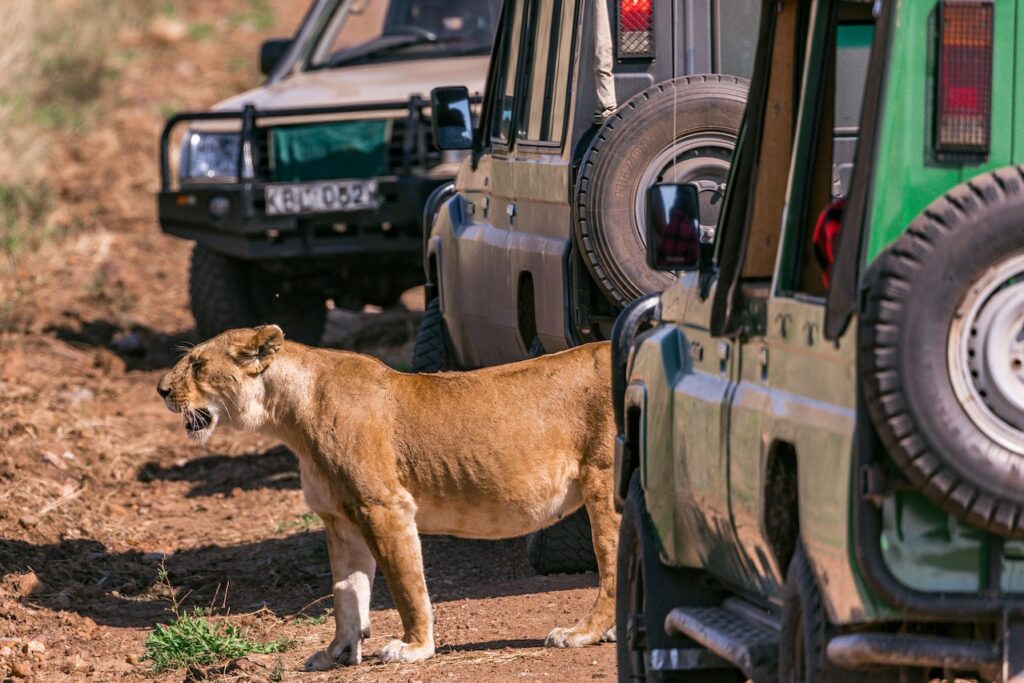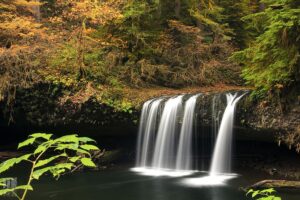A Guide to Safaris in Tanzania

Whether it is watching a pride of lions feasting after a day’s hunt, a herd of buffaloes running for their dear life, or thousands of animals walking together in search of water, safari in Tanzania is one the best ways to observe wildlife at its most natural setting.
With massive concentration of wildlife, the national parks in Tanzania are considered to be some of the best when it comes to safari experiences. The amazing part of a Tanzanian safari experience is that a beach holiday can easily be added in your itinerary of if you want to spend a few days sunbathing and relaxing at a beach after an adventurous time in the wild.
Highlights of a Safari Trip in Tanzania
- Spotting the Big Five (African Elephant, Rhinoceros, Leopard, African Lion, African Buffalo).
- The Great Migration of thousands of animals travelling from North to South every year.
- A chance to interact with the Maasai people to get a feel of their tribal African culture.
- Watching Mt. Kilimanjaro, the highest peak in Africa.
- An option of mixing up the wild safaris with a quiet beach holiday at Zanzibar or other islands nearby.
- Best Safari Destinations in Tanzania
- A quarter of Tanzania’s land is set aside for national parks and conservation area, and each one of them is equally diverse and unique in its own right. It can be a real dilemma to choose the best national parks in Tanzania. Still, there are a few national parks which are better than others. Below we look at three of the best national parks in Tanzania:
Serengeti National Park
This is the most popular safari destination in Tanzania, and more than half a million tourists visit Serengeti National Park every year. The major attraction of this place is the Great Migration, where about 2 million wildebeest, 300,000 zebras, and various types of gazelles migrate from North to South every year in search of grassland and water.
If you are travelling to Serengeti National Park to witness the Great Migration, then you must choose the place you will be staying according to the location of the migrating herds. For example, if you are planning to visit Serengeti National Park between July and November, then it is best to stay in Northern Serengeti, as the herds will pass through this area during this period.
Ngorongoro Conservation Area
The Ngorongoro Crater is the world’s largest volcanic caldera and it is the showpiece of the Ngorongoro Conservation Area. Undisturbed by human settlement, the crater shelters the densest concentration of wildlife on earth, one of the most beautiful natural wildlife settings in the world.
The chance of spotting the Big Five in the Ngorongoro Crater is the highest compared to anywhere in the region. Other wildlife here include hyena, cheetah, jackal, gazelle, flamingo, fox and more than 400 species of bird.
If you’re staying in the vicinity of the crater rim, then you can enjoy the beautiful sight of Ngorongoro not just on your game drive, but also from your hotel room. You need to, however, book the hotels in advance, because these places can get booked as early as six months in advance.
Selous Game Reserve
Located in the Southern Safari Circuit, Selous Game Reserve is Africa’s largest game reserve sheltering both eastern and southern animals, both resident and migrant. The best thing about Selous Game Reserve is the lack of huge crowds even during peak season, which makes a safari experience more private and authentic to a traveller.
Despite the relatively untouched wilderness, Selous Game Reserve is easily accessible from Dar and Ruaha. There are daily flights scheduled to Selous Game Reserve from Dar and Ruaha, which take 45 minutes and 90 minutes, respectively.
One of the major attractions of Selous Game reserve is the variety of safari activities available here. Game drives in the dry season can be stunning because animals are very easy to spot as they tend to gather around the lakes during this period.
The beautiful boat safaris through the lakes and channels, encountering hippos and crocodiles along with other birds and animals, are one of the activities that set this place apart from other safari destinations in Tanzania.
Selous Game Reserve also offers unique fly-camping trips, which include walking safaris, mobile camping and sleeping beneath the magnificent starry skies of Africa.
The best season to visit Tanzania
- The best season to visit Tanzania is during June to October. There is no rainfall during this period, and animals are easier to locate because they gather around sources of water.
- However, the downside of visiting Tanzania during this season is that it is heavily crowded and finding hotels or lodges at good locations can become difficult.
- The low season (November-May), would be an ideal time to visit for those who want a quieter safari experience. The hotel rates go down during this period and it is an added bonus, especially for those travelling on a budget.
- However, during the peak of wet season, from March to May, Tanzania experiences heavy rainfall every day, usually lasting all day. Travelling during these months can be very difficult because a large number of lodges shut operations and the roads often become impassable.
How to Book a Safari Trip to Tanzania
It is always recommended to check out Bookmundi.com as you can easily compare prices and reviews, and pick the best location for you in Africa, and subsequently choose the safari package that is most suitable for you.





